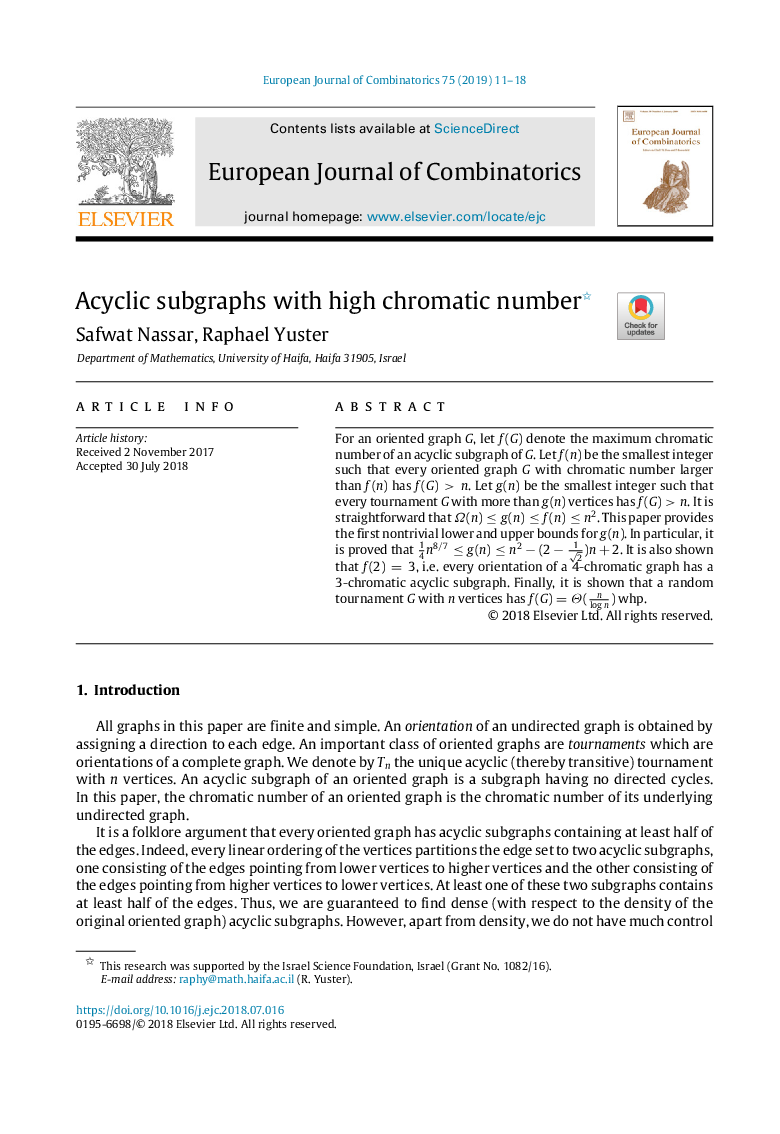| Article ID | Journal | Published Year | Pages | File Type |
|---|---|---|---|---|
| 8903535 | European Journal of Combinatorics | 2019 | 8 Pages |
Abstract
For an oriented graph G, let f(G) denote the maximum chromatic number of an acyclic subgraph of G. Let f(n) be the smallest integer such that every oriented graph G with chromatic number larger than f(n) has f(G)>n. Let g(n) be the smallest integer such that every tournament G with more than g(n) vertices has f(G)>n. It is straightforward that Ω(n)â¤g(n)â¤f(n)â¤n2. This paper provides the first nontrivial lower and upper bounds for g(n). In particular, it is proved that 14n8â7â¤g(n)â¤n2â(2â12)n+2. It is also shown that f(2)=3, i.e. every orientation of a 4-chromatic graph has a 3-chromatic acyclic subgraph. Finally, it is shown that a random tournament G with n vertices has f(G)=Î(nlogn) whp.
Related Topics
Physical Sciences and Engineering
Mathematics
Discrete Mathematics and Combinatorics
Authors
Safwat Nassar, Raphael Yuster,
